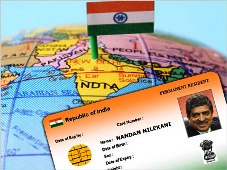 The electronic disbursal platform suggested by the task force, led by Unique Identification Development Authority of India chairman Nandan Nilekani, is slated to transform the entire subsidy and entitlement payments made through government schemes.
The electronic disbursal platform suggested by the task force, led by Unique Identification Development Authority of India chairman Nandan Nilekani, is slated to transform the entire subsidy and entitlement payments made through government schemes.
It will help plug leakages, reach the intended beneficiaries quickly and reduce hassles and delivery cost.
Here are some questions and their answers explaining the logic behind the creation of this mode, and how it will work.
Why is a country-wide integrated government payment platform required?
Easy access to finance remains a dream for the poor. Last-mile payment issues are observed in government schemes while disbursing pensions, scholarships, wages, etc.
Workers in government schemes often do not receive their salaries on time.
The logic behind the integrated platform is that a great amount of productivity and efficiency can be unlocked by ensuring that beneficiaries receive their money through Electronic Benefit Transfer on time, in any account at a bank or post office of their choice and at their own convenience.
With this, the government can hope that funds are accessed by the intended beneficiaries, and not by commission-seeking middle-men.
The government is also working on direct transfer of subsidy payments in the case of fertiliser, kerosene and LPG, in order to address incentive distortions that arise with subsidised pricing.
It is expected that when these products are purchased by making cash payments they will be sold at the market price; and the beneficiaries will also get reimbursement of the subsidy into their accounts at banks and post offices.
In case the products are purchased electronically (through micro ATMs, debit card, Kisan Credit Card, etc.), only the subsidised price may be paid, and the government can reimburse the subsidy to the retailers electronically.
These EBT and DTS payments add up to Rs 3 lakh crore (Rs 3 trillion) today -- roughly 3.5 per cent of the gross domestic product.
Remittances are estimated to be an additional Rs 1 lakh crore (Rs 1 trillion).
An integrated platform approach to payments is therefore necessary to address the delivery of last mile payments.
What will be the role of Aadhaar in this?
The government is issuing Aadhaar numbers to all citizens of India (1.8 million enrollments have been completed as of January 31).
The Aadhaar number, due to its uniqueness, will be utilised in the process as a financial address for sending payments to accounts of beneficiaries at banks and post offices through the Aadhaar Payments Bridge.
The Aadhaar authentication system will allow the identity of a person to be authenticated in real-time during last-mile payment transactions done through micro ATMs.
What is the business model for participants?
The task force has recommended creation of an inter-operable network of 1 million agents using the combined infrastructure of India Post and banks.
To make government payments viable in the last mile, the task force has suggested that the government bear a transaction processing fee of 3.14 per cent with a cap of Rs 20 per transaction.
For inter-operable transactions, 31 per cent of the fee can be paid to the issuing bank, 64 per cent to the acquiring bank and five per cent to the switch.
How will the platform work?
Funds will be released by the ministry of finance to the ministries concerned for direct transfer of subsidies and electronic benefit transfers.
This will be implemented by the Controller General of Accounts.
Ministries, state governments and other government institutions will route DTS and EBT payments to individuals on the basis of Aadhaar numbers to Aadhaar-enabled accounts at banks and post offices.
Customers of banks will access funds through existing channels.
Besides, banks will set up business correspondent banking channel at the last mile. BC sub-agents will be equipped with micro ATMs that can conduct transactions on the basis of Aadhaar number and biometric authentication, as well as other authentication methods used by banks.
Just like ATMs, BCs will be able to serve customers of any bank by routing transactions through the specified gateway permitted under the Payment and Settlement Systems Act, 2007, connected to the bank that has appointed them.
For Rediff Realtime News On February 28 National Strike Click Here









